11. Implications and applications¶
The Concept¶
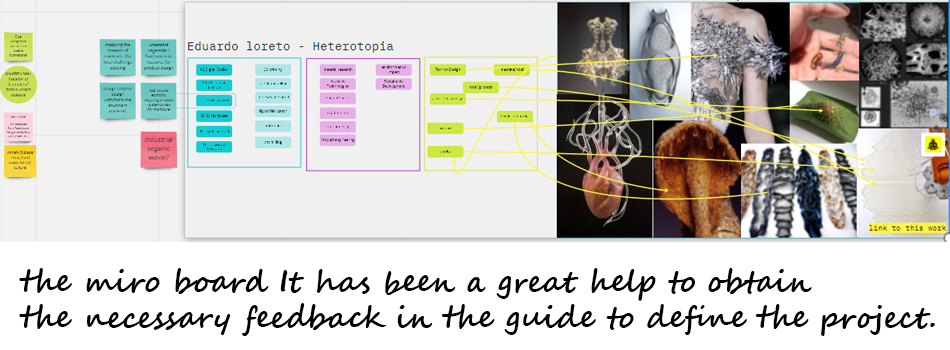
I am a fashion designer and I have specialized in haute couture, where I have been able to explore more about materials and how to modify them, is when I became interested in Fabriacademy because I wanted to be able to do an exploration of the viability of making a sustainable collection. I have always had problems with synthetic materials or that I lacked information about their origin. That is why I want to make a collection in which I can make a mono-material collection and do exploration on this important raw material that I obtain from the decontamination of soils with biological risk and be able to explore through that biomass.

WHAT?¶
- Integrate new manufacturing methods into a fully functional system to create a brand
- Catalog of materials and mix them with other textiles.
WHY?¶
- What is the reason behind your project, why do you want to research the topic? I would like to create a beneficial impact for the client, the environment and myself as a designer
- Is there a greater cause to which you are contributing? as the main cause I would like to involve the design processes in a large scale of caring for the environment
HOW?¶
- That is the big question! but I hope to find a clear and easy system to follow also by future designers and creators who want to implement new materials or experiments to clothes.
I have made a small schedule of the next few weeks, in which I divided each week by elements of design and production.
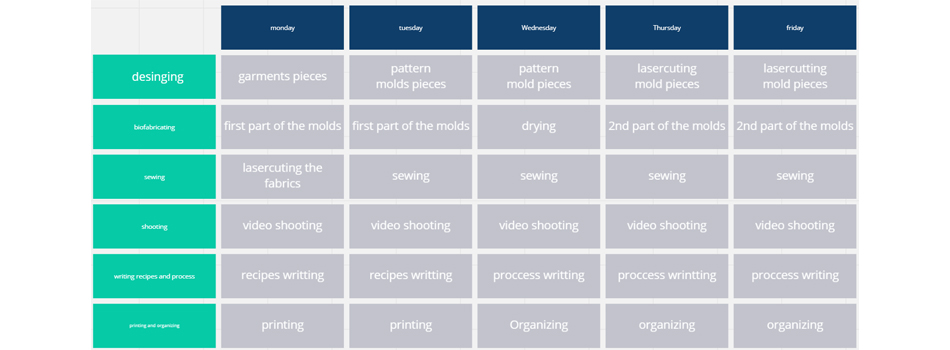
I have also made a wall of post-its that help me to know where I am going in the design process since although the calendar is done there are things that can be extended over time or some other things that I can advance and others that I have to wait and So I have a count and an order.
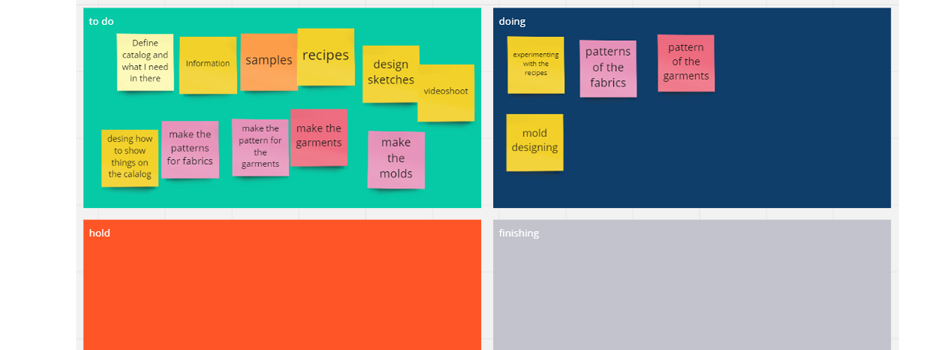
WHO - FOR / WITH WHOM?¶
The system and the implementation of materials will be aimed at designers and creators who want to start with biofabrication and its implementation.
The project¶
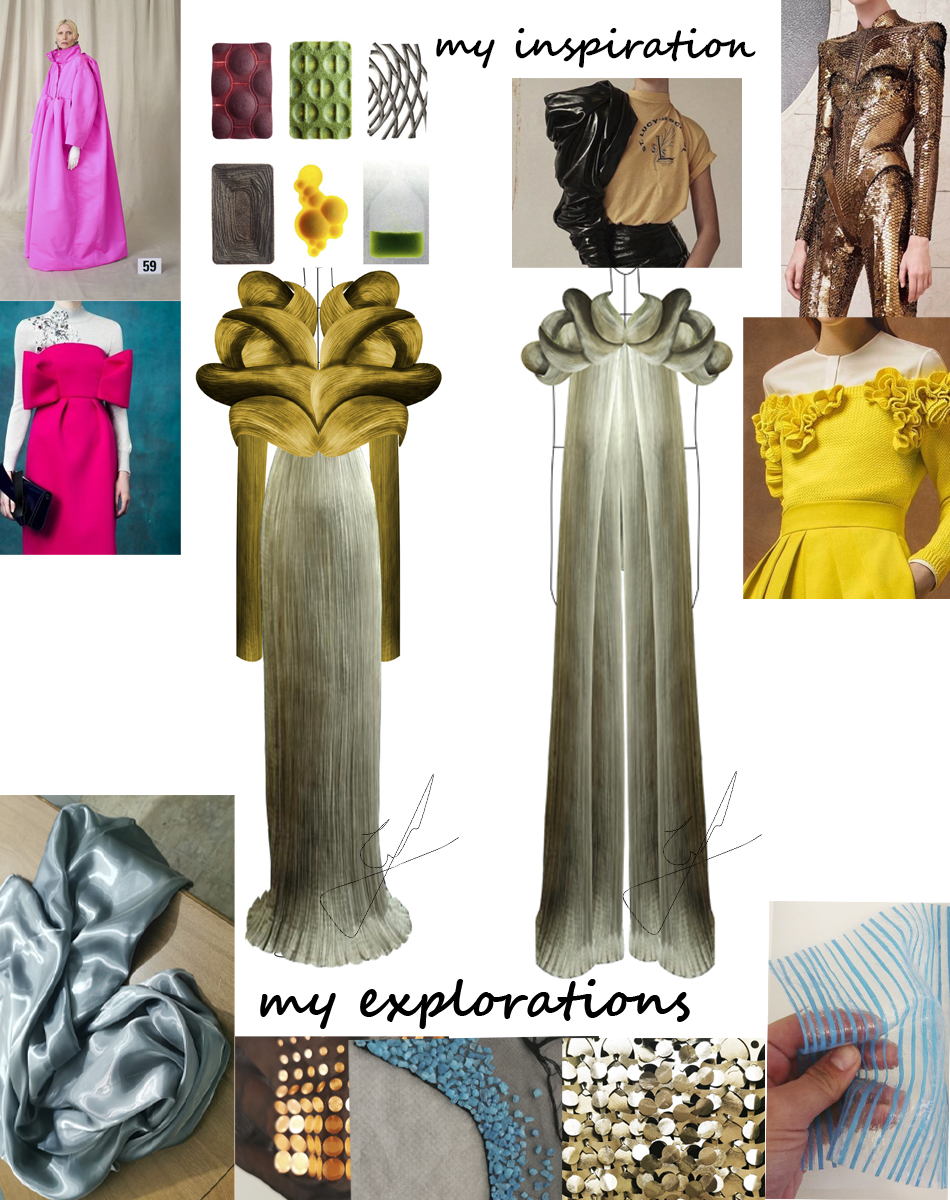
The project aims to design an haute couture collection in which the garments will be from the new material. I will review the different fabrication techniques and by using a single type of waste obtained through bioremediation. This exploration will help me test the different stages of the material and its use for the market and therefore scale its production for sale as material for designers and industry. The collection is a catalog of examples of what the designer can do with the material.
The inspiration¶
Heterotopy is an evolutionary change in the spatial arrangement of an animal's embryonic development, complementary to heterochrony, a change to the rate or timing of a development process. It was first identified by Ernst Haeckel in 1866 and has remained less well studied than heterochrony.
That inspires me since I saw myself reflected in the moment we find ourselves and how we are influencing the evolution of materials and products.
We are creating new ways to use our resources and to improve existing resources to create a more respectful world and to be able to influence efficiently and in this change for the good that we all want.
The Raw material¶
The biomass used as raw material, this will be obtained through phytoremediation, which is the extraction of metals from soils contaminated by the industry, this is extracted through agriculture, then these plants biomass is processed to extract heavy metals and make bioplasticstables are extracted from the metals and a one remains plants not suitable for human consumption and generally it is incenerated and dumped.
I want to make this end-product work that biomass and with which I stop for the exploration of new biomaterials
A short story of success on reclamate soils contaminated by abandoned mines
The exploration¶
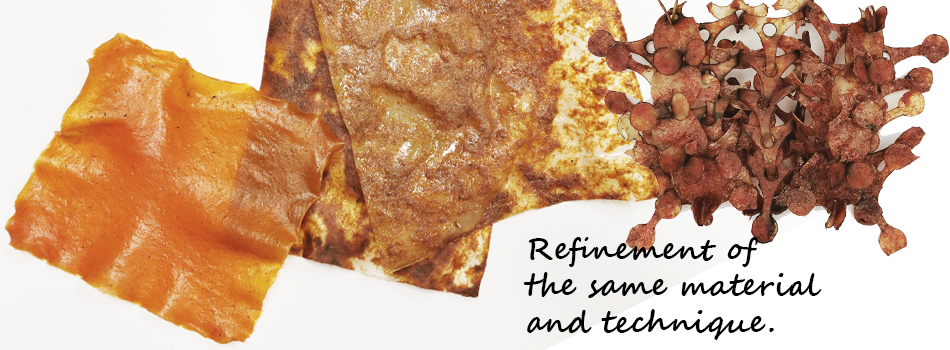
The second phase has to do with the exploration of biomaterials and testing the results of new materials to scale their production. Use different exploration techniques since my goal is to be able to have a catalog of different materials starting from a single raw material. This will help me as a designer and be able to teach other designers who have gone through the same thing to explore and design in a monomaterial way to be more aware of how my products are going to be recycled or renewed in the future.

The viability of the collection¶
In the third phase, I will base it on the viability of making this new material to be able to make fully scalable and sustainable collections environmentally and also economically since it is one of the biggest challenges that I find myself in being able to develop my brand.
A report on how the new haute couture adapts in post-pandemic times